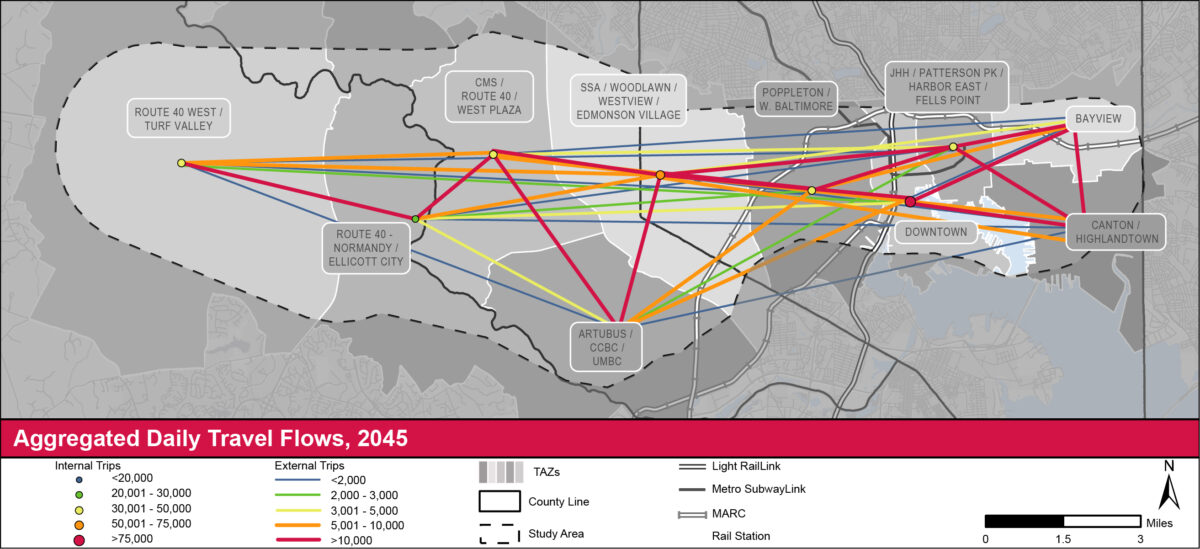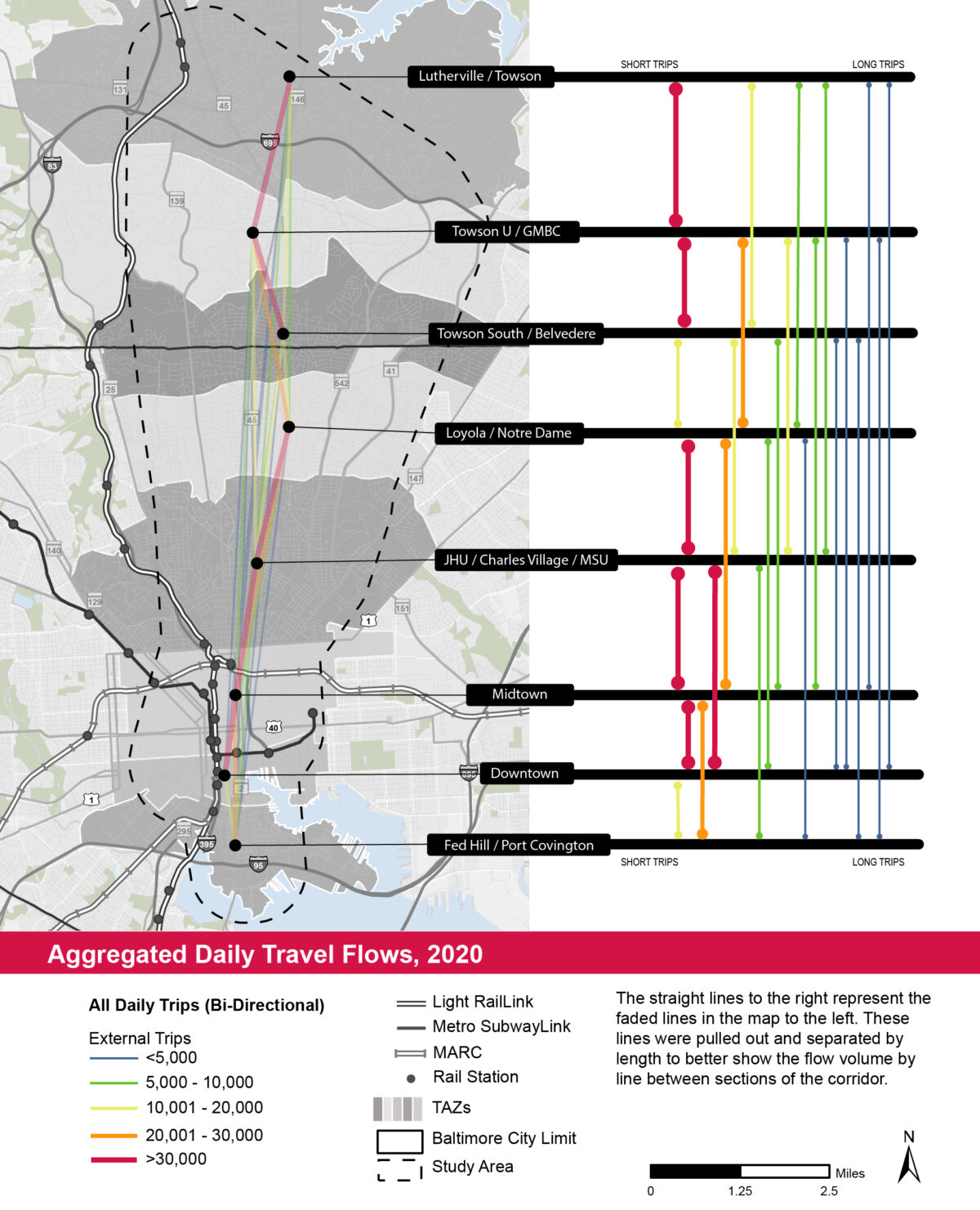Foursquare ITP conducted east-west and north-south corridor studies for the Maryland Transit Administration. The east-west study was a conceptual design of a 15-mile corridor from east Baltimore to Ellicott City. The North-South corridor study provided conceptual design for a nine-mile North-South Corridor from the University of Maryland Medical Center (UMMC) in Downtown Baltimore to the Greater Towson Area.
These corridors were selected for feasibility studies due to Foursquare ITP’s previous work with the Central Maryland Regional Transit Plan (RTP) and due to their regional significance. We provided the analysis and recommendations to transform the arterials into multi-modal corridors and provided guidance for both technical and political challenges. The project strives to transform auto-oriented arterials into true multi-modal corridors. The North-South section of the corridor connects Downtown Baltimore, the region’s urban center, with Towson University, which is a major trip generator.
Foursquare ITP completed a market and demand analysis for both corridors, led the operations and maintenance cost calculations for corridor options, and further evaluated and refined the alternatives. We also developed the BRT and local feeder bus service plans and cost estimates for three build alternatives in addition to playing an integral role in the strategic evaluation framework and analysis of the impacts of alternatives. Additionally, our team guided stakeholder groups, made up of jurisdictions and MTA staff, through a series of workshops that used a combination of presentations and online interactive mapping to explore alternative options.
Our analysis served to help MTA determine which alternatives would move forward to the next phase of study, developing four alternatives for bus rapid transit, and feeder bus changes for all seven alternatives. The east-west corridor is now considered one of the highest-priority corridors in the Baltimore region. It is scheduled to begin construction in 2025 with funding from discretionary grant award from the U.S. Department of Transportation.
Solutions and Outcomes
- Conducted a market analysis to analyze transit propensity, potential, demand, and capacity.
- Synthesized data, goals, and objectives provided by individual and organizational stakeholders.
- Evaluated a series of scenarios and alternatives to guide MTA and local planning agencies in addressing service gaps and areas of need.
- Provided recommendations for implementation of the QuickLink 40 Pilot.

